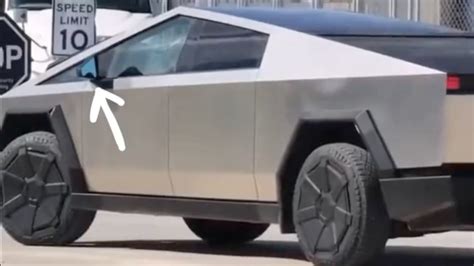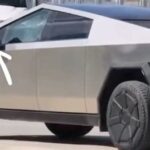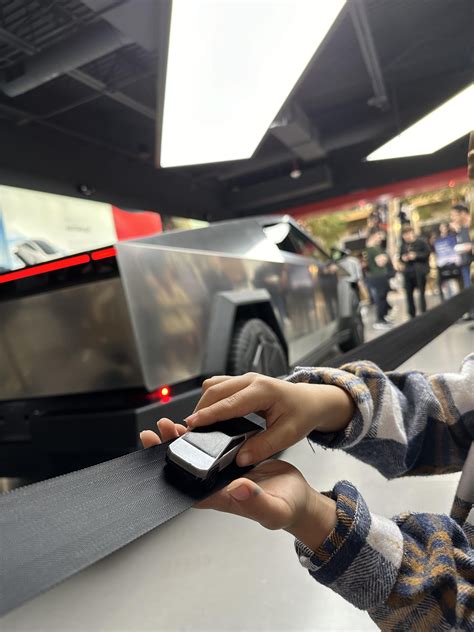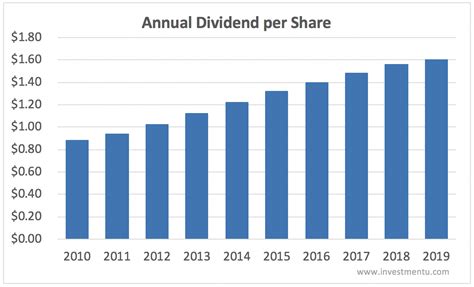
A Chinese electric vehicle startup, Cyber Space, is poised to challenge Tesla’s Cybertruck with its Super Truck, a similarly angular and futuristic pickup priced at approximately $41,000. The Super Truck boasts steer-by-wire technology, unique wheel designs, and is targeting a younger demographic eager for innovative and stylish electric vehicles.
China’s Cybertruck Competitor: Cyber Space Super Truck Debuts with $41,000 Price Tag, Steer-By-Wire System, and Distinctive Design
Cyber Space, a relatively new player in the burgeoning Chinese electric vehicle (EV) market, has unveiled its Super Truck, a pickup truck designed to compete directly with Tesla’s Cybertruck. With a starting price of around $41,000 (300,000 yuan), the Super Truck aims to undercut the Cybertruck while offering a compelling combination of advanced technology and bold aesthetics. The Super Truck’s most notable features include a steer-by-wire system, eye-catching wheel designs, and an overall design philosophy that targets a younger, tech-savvy consumer base. This aggressive move highlights the increasing competition within the EV sector and the growing sophistication of Chinese automotive manufacturers.
Design and Aesthetics
The Super Truck’s design undeniably draws inspiration from the Cybertruck, featuring sharp angles, flat surfaces, and a generally futuristic silhouette. However, Cyber Space has incorporated several distinctive elements to differentiate its offering. The most striking of these are the wheel designs, which are significantly more elaborate and visually aggressive than those seen on the Cybertruck. These wheels contribute to the Super Truck’s overall aggressive stance and reinforce its appeal to a younger audience seeking a vehicle that makes a statement. While specific details regarding the materials used in the Super Truck’s construction are scarce, it is likely to incorporate high-strength steel and aluminum alloys, similar to the Cybertruck, to achieve a balance of durability and weight reduction. Cyber Space emphasizes the truck’s overall design as catering to a “younger generation.” The interior details are also being kept under wraps but are expected to reflect the exterior’s futuristic theme, likely incorporating large touchscreens, minimalist dashboards, and advanced connectivity features.
Steer-By-Wire Technology
One of the Super Truck’s standout features is its steer-by-wire system. Unlike traditional steering systems that rely on a mechanical linkage between the steering wheel and the wheels, steer-by-wire systems use electronic sensors and actuators to translate the driver’s input into steering commands. This technology offers several potential advantages, including:
- Enhanced Steering Precision: Steer-by-wire systems can provide more precise and responsive steering, as the electronic control system can filter out unwanted vibrations and optimize the steering ratio based on driving conditions.
- Improved Maneuverability: The steering ratio can be dynamically adjusted to improve maneuverability at low speeds and stability at high speeds.
- Advanced Driver-Assistance Systems (ADAS) Integration: Steer-by-wire systems are inherently compatible with advanced driver-assistance systems, such as lane keeping assist and automated parking, as the electronic control system can directly control the steering angle.
- Design Flexibility: Removing the mechanical linkage between the steering wheel and the wheels allows for greater design flexibility in the vehicle’s interior.
However, steer-by-wire technology also presents some challenges. Reliability and safety are paramount, as any failure in the electronic control system could result in a loss of steering control. Redundancy and fail-safe mechanisms are crucial to ensure the system’s safety. Furthermore, drivers accustomed to traditional steering systems may need time to adjust to the different feel of steer-by-wire. It remains to be seen how Cyber Space will address these challenges and ensure the safety and reliability of its steer-by-wire system. The incorporation of steer-by-wire aligns the Super Truck with cutting-edge automotive technology trends and positions it as a technologically advanced offering.
Targeting a Younger Demographic
Cyber Space is explicitly targeting a younger demographic with the Super Truck. This demographic is characterized by its embrace of technology, its desire for stylish and individualistic products, and its increasing interest in electric vehicles. The Super Truck’s futuristic design, advanced technology, and relatively affordable price point are all designed to appeal to this market segment. Cyber Space is likely to employ a marketing strategy that leverages social media and online channels to reach its target audience. Collaborations with influencers and partnerships with technology companies could also be part of the marketing mix. The company’s branding and messaging will likely emphasize the Super Truck’s innovative features, its environmental friendliness, and its ability to make a statement. By focusing on a younger demographic, Cyber Space hopes to establish a loyal customer base and gain a foothold in the rapidly growing EV market. The company is attempting to capture the consumers who are ready to embrace the future of transportation, viewing vehicles not just as means of transport but as extensions of their digital lifestyles.
Competitive Landscape
The Super Truck enters a highly competitive EV market, particularly in China, which is the world’s largest EV market. Tesla’s Cybertruck is the most obvious competitor, but the Super Truck also faces competition from other electric pickup trucks, such as the Rivian R1T, the Ford F-150 Lightning, and the GMC Hummer EV. Furthermore, numerous Chinese EV manufacturers are developing their own electric pickup trucks, further intensifying the competition.
To succeed in this market, Cyber Space will need to differentiate its offering through a combination of innovative technology, competitive pricing, and effective marketing. The Super Truck’s steer-by-wire system and distinctive design could give it an edge, but the company will also need to demonstrate the reliability and performance of its vehicle. Furthermore, Cyber Space will need to establish a robust manufacturing and distribution network to meet the anticipated demand for its Super Truck. The company’s ability to scale up production and deliver vehicles to customers on time will be crucial to its success. The Chinese EV market is known for its rapid pace of innovation and intense competition, meaning Cyber Space must adapt quickly to evolving market trends and consumer preferences.
Pricing and Availability
With a starting price of around $41,000 (300,000 yuan), the Super Truck is positioned as a relatively affordable option in the electric pickup truck segment. This price point is significantly lower than the expected price of the Tesla Cybertruck in international markets and competitive with other Chinese-made electric vehicles. However, the final price of the Super Truck may vary depending on the configuration and options chosen. Cyber Space has not yet announced the specific trim levels and optional features that will be available for the Super Truck.
The availability of the Super Truck is currently limited to the Chinese market. Cyber Space has not yet announced any plans to export the vehicle to other countries. However, given the global demand for electric vehicles, it is possible that the Super Truck could eventually be sold in international markets. The timing and scope of any international expansion will likely depend on the company’s ability to scale up production and meet the demand in China. Furthermore, Cyber Space will need to comply with the regulatory requirements of each country in which it plans to sell the Super Truck. The company will also need to establish a distribution and service network in each market. The pricing strategy is crucial for Cyber Space, as it needs to balance affordability with profitability while competing against established players like Tesla and other emerging Chinese EV brands.
Manufacturing and Production
Details regarding the Super Truck’s manufacturing and production are currently limited. It is unclear whether Cyber Space will manufacture the vehicle itself or partner with an existing automotive manufacturer. Establishing a robust and efficient manufacturing process is critical to the success of any automotive company, and Cyber Space will need to ensure that it can produce the Super Truck in sufficient quantities to meet the anticipated demand. Furthermore, the company will need to implement rigorous quality control measures to ensure that the Super Truck meets the highest standards of reliability and performance. The manufacturing process will also need to be sustainable, minimizing the environmental impact of the vehicle’s production. This includes using recycled materials, reducing energy consumption, and minimizing waste. Cyber Space’s approach to manufacturing will be a key factor in determining its long-term success. The company’s production capacity, efficiency, and quality control will directly impact its ability to compete in the highly demanding EV market.
Technological Innovations
Beyond the steer-by-wire system, the Super Truck is expected to incorporate a range of other technological innovations. These may include:
- Advanced Battery Technology: The Super Truck will likely use advanced lithium-ion battery technology to achieve a competitive range and charging time. The specific battery chemistry and energy density will be crucial factors in determining the vehicle’s performance.
- High-Performance Electric Motors: The Super Truck is expected to be powered by high-performance electric motors that deliver strong acceleration and towing capabilities. The number of motors and their power output will determine the vehicle’s performance characteristics.
- Advanced Driver-Assistance Systems (ADAS): The Super Truck is likely to incorporate a suite of advanced driver-assistance systems, such as adaptive cruise control, lane keeping assist, and automatic emergency braking. These systems will enhance safety and convenience for the driver.
- Over-the-Air (OTA) Updates: The Super Truck will likely support over-the-air software updates, allowing Cyber Space to continuously improve the vehicle’s performance and features. OTA updates will also enable the company to fix bugs and address any security vulnerabilities.
- Connectivity Features: The Super Truck is expected to offer a range of connectivity features, such as smartphone integration, navigation, and entertainment. These features will enhance the user experience and keep the driver connected while on the road.
- Autonomous Driving Capabilities: While the Super Truck may not initially offer full autonomous driving capabilities, it is likely to be equipped with the hardware and software necessary to support future autonomous driving features. The level of autonomy will depend on the regulatory environment and the availability of advanced sensors and algorithms.
These technological innovations will be key differentiators for the Super Truck and will help it to compete against other electric vehicles in the market. Cyber Space’s ability to integrate and optimize these technologies will be crucial to its success.
Sustainability and Environmental Impact
As an electric vehicle, the Super Truck offers significant environmental benefits compared to traditional gasoline-powered vehicles. Electric vehicles produce zero tailpipe emissions, reducing air pollution and greenhouse gas emissions. However, the overall environmental impact of an electric vehicle depends on the source of electricity used to charge the battery. If the electricity comes from renewable sources, such as solar or wind power, the environmental benefits are maximized. If the electricity comes from fossil fuels, the environmental benefits are reduced.
Cyber Space is likely to promote the Super Truck as a sustainable transportation option. The company may also invest in renewable energy projects to offset the emissions associated with the vehicle’s production and operation. Furthermore, the company may use recycled materials in the vehicle’s construction and implement sustainable manufacturing practices. The company’s transparency regarding its supply chain and the environmental impact of its battery production will be critical for environmentally conscious consumers. The overall sustainability of the Super Truck will be a key factor in its appeal to environmentally conscious consumers.
Future Prospects
The Super Truck represents a bold attempt by Cyber Space to challenge Tesla in the electric pickup truck market. The vehicle’s futuristic design, advanced technology, and competitive pricing could make it an attractive option for consumers, particularly younger buyers. However, Cyber Space faces significant challenges, including intense competition, the need to establish a robust manufacturing and distribution network, and the need to demonstrate the reliability and performance of its vehicle.
The company’s success will depend on its ability to execute its strategy effectively and adapt to the rapidly evolving EV market. If Cyber Space can overcome these challenges, the Super Truck could become a significant player in the electric pickup truck segment. The company’s ability to innovate and differentiate its offering will be crucial to its long-term success. The future of Cyber Space and its Super Truck remains uncertain, but the company’s ambitious plans and innovative technology make it a company to watch in the electric vehicle market. The company must maintain a customer-centric approach, focusing on providing a seamless ownership experience and building a strong brand reputation.
Challenges and Risks
Despite the potential for success, Cyber Space faces several challenges and risks:
- Competition: The EV market is highly competitive, with numerous established automakers and startups vying for market share. Cyber Space will need to differentiate its Super Truck from the competition to attract customers.
- Manufacturing: Establishing a robust and efficient manufacturing process is crucial to the success of any automotive company. Cyber Space will need to ensure that it can produce the Super Truck in sufficient quantities to meet the anticipated demand.
- Reliability: Electric vehicles are complex machines, and reliability is a key concern for consumers. Cyber Space will need to demonstrate that the Super Truck is reliable and performs as advertised.
- Brand Recognition: Cyber Space is a relatively new company, and it lacks the brand recognition of established automakers like Tesla and Ford. The company will need to invest in marketing and branding to build awareness and credibility.
- Regulatory Environment: The automotive industry is heavily regulated, and Cyber Space will need to comply with all applicable regulations in the countries where it plans to sell the Super Truck. These regulations can change, and Cyber Space will need to adapt to evolving requirements.
- Supply Chain Disruptions: The global supply chain has been disrupted in recent years, and Cyber Space could face challenges in sourcing the components and materials needed to manufacture the Super Truck. These disruptions could lead to delays and increased costs.
- Economic Conditions: Economic downturns can reduce consumer demand for automobiles, including electric vehicles. Cyber Space’s success will depend on the overall health of the economy.
- Technological Advancements: The EV market is rapidly evolving, and Cyber Space will need to keep pace with technological advancements to remain competitive. This requires continuous investment in research and development.
- Geopolitical Risks: Geopolitical tensions and trade disputes could disrupt Cyber Space’s supply chain and access to markets. The company will need to navigate these risks carefully.
- Cybersecurity Risks: Electric vehicles are increasingly connected, making them vulnerable to cybersecurity threats. Cyber Space will need to implement robust cybersecurity measures to protect its vehicles and customer data.
Addressing these challenges and mitigating these risks will be crucial to Cyber Space’s long-term success. The company’s ability to adapt to changing circumstances and overcome obstacles will determine its fate in the competitive EV market.
Cyber Space’s Long-Term Vision
While the Super Truck represents Cyber Space’s initial foray into the EV market, the company likely has a broader long-term vision. This vision may include:
- Expanding its product line: Cyber Space may plan to introduce additional electric vehicles, such as sedans, SUVs, and commercial vehicles. Expanding its product line would allow the company to target a wider range of customers and increase its market share.
- Developing advanced technologies: Cyber Space may invest in developing advanced technologies, such as autonomous driving, battery technology, and charging infrastructure. These technologies could give the company a competitive edge and help it to shape the future of transportation.
- Expanding its global presence: Cyber Space may plan to expand its global presence by selling its vehicles in international markets. This would allow the company to tap into new sources of demand and increase its revenue.
- Building a sustainable ecosystem: Cyber Space may focus on building a sustainable ecosystem around its electric vehicles, including charging infrastructure, energy storage solutions, and recycling programs. This would help to reduce the environmental impact of its products and promote sustainable transportation.
- Becoming a leading EV brand: Cyber Space’s ultimate goal may be to become a leading EV brand, recognized for its innovative technology, sustainable practices, and customer-centric approach. Achieving this goal would require a long-term commitment to innovation, quality, and customer satisfaction.
Cyber Space’s long-term vision will guide its strategic decisions and shape its future trajectory. The company’s ability to execute its vision effectively will determine its success in the rapidly evolving EV market.
Conclusion
The Cyber Space Super Truck represents an intriguing entry into the electric pickup truck market, directly challenging Tesla’s Cybertruck with its futuristic design, advanced technology, and competitive pricing. The inclusion of steer-by-wire technology sets it apart, aligning with cutting-edge automotive trends. However, the company faces significant hurdles in a competitive landscape, requiring it to establish robust manufacturing, demonstrate reliability, and build brand recognition. Its focus on a younger demographic, coupled with its commitment to sustainability and technological innovation, positions it as a potential disruptor in the EV sector. Whether Cyber Space can successfully navigate these challenges and realize its ambitious vision remains to be seen, but the Super Truck marks a noteworthy development in the ongoing evolution of the electric vehicle market, particularly in China. The success of Cyber Space will depend on its ability to innovate, adapt, and deliver a compelling value proposition to consumers in a rapidly changing market environment. The introduction of the Super Truck adds another layer of complexity and excitement to the already dynamic world of electric vehicles.
Frequently Asked Questions (FAQ)
Q1: What is the price of the Cyber Space Super Truck and how does it compare to the Tesla Cybertruck?
A: The Cyber Space Super Truck is priced at approximately $41,000 (300,000 yuan). While Tesla Cybertruck pricing varies based on configuration and market, the Super Truck is positioned to be competitively priced, potentially undercutting the Cybertruck in some markets. The original article suggests that the company is targeting affordability to attract a wider range of customers, especially those in the younger demographic.
Q2: What is steer-by-wire technology and what are its benefits in the Super Truck?
A: Steer-by-wire technology replaces the traditional mechanical linkage between the steering wheel and the wheels with an electronic system. This offers several advantages, including:
- Enhanced steering precision and responsiveness.
- Improved maneuverability through dynamic steering ratio adjustments.
- Seamless integration with advanced driver-assistance systems (ADAS).
- Greater design flexibility in the vehicle’s interior.
The Cyber Space Super Truck’s adoption of this technology underscores its commitment to innovation and advanced vehicle control.
Q3: What demographic is Cyber Space targeting with the Super Truck?
A: Cyber Space is explicitly targeting a younger, tech-savvy demographic with the Super Truck. This group values innovative technology, stylish design, and environmentally friendly transportation options. The Super Truck’s futuristic aesthetics, advanced features, and competitive pricing are all tailored to appeal to this audience.
Q4: What are the key challenges Cyber Space faces in competing with Tesla and other EV manufacturers?
A: Cyber Space faces several significant challenges, including:
- Intense competition from established automakers and emerging EV brands.
- The need to establish a robust and efficient manufacturing process.
- Ensuring the reliability and performance of the Super Truck.
- Building brand recognition and trust in the market.
- Navigating evolving regulatory environments.
- Managing supply chain complexities and potential disruptions.
Overcoming these challenges will be crucial for Cyber Space to gain a foothold in the competitive EV market.
Q5: Is the Super Truck currently available outside of China, and what are Cyber Space’s plans for international expansion?
A: Currently, the Super Truck is only available in the Chinese market. Cyber Space has not yet announced specific plans for international expansion. However, given the global demand for electric vehicles, it is possible that the Super Truck could eventually be sold in other countries. The timing and scope of any international expansion will depend on the company’s ability to scale up production, meet domestic demand, and comply with regulatory requirements in different markets.
Q6: What kind of battery technology and range can we expect from the Cyber Space Super Truck?
A: Specific details on the battery technology are scarce. However, expectations are that the Super Truck will use advanced lithium-ion battery technology to achieve a competitive range and charging time that would be in line with current industry standards for electric pickup trucks. The exact range, charging times, and battery capacity remain to be officially announced by Cyber Space.
Q7: What is Cyber Space’s approach to manufacturing the Super Truck, and will they be partnering with an established manufacturer?
A: Details regarding the manufacturing process are currently limited. It is unclear whether Cyber Space will manufacture the vehicle itself or partner with an existing automotive manufacturer. Establishing a robust and efficient manufacturing process is critical to the success of any automotive company.
Q8: Besides steer-by-wire, what other advanced technologies are expected to be incorporated into the Super Truck?
A: Aside from the steer-by-wire system, the Super Truck is expected to incorporate a range of other technological innovations, including:
- Advanced battery technology.
- High-performance electric motors.
- Advanced Driver-Assistance Systems (ADAS).
- Over-the-Air (OTA) updates.
- Connectivity features.
- Potential for future autonomous driving capabilities.
Q9: What steps is Cyber Space taking to ensure the sustainability and minimize the environmental impact of the Super Truck’s production and operation?
A: Cyber Space is likely to promote the Super Truck as a sustainable transportation option. The company may also invest in renewable energy projects to offset the emissions associated with the vehicle’s production and operation. Furthermore, the company may use recycled materials in the vehicle’s construction and implement sustainable manufacturing practices. Transparency regarding its supply chain and battery production will be important.
Q10: What is Cyber Space’s long-term vision for its product line and its position in the electric vehicle market?
A: Cyber Space’s long-term vision likely includes:
- Expanding its product line to include other EV types.
- Developing advanced technologies like autonomous driving and better batteries.
- Expanding its global presence beyond China.
- Building a sustainable ecosystem around its vehicles.
- Becoming a leading EV brand recognized for innovation and sustainability.
Q11: How does the Super Truck’s design differentiate itself from the Tesla Cybertruck, and what design elements make it appealing to a younger audience?
A: While the Super Truck draws inspiration from the Cybertruck’s angular design, it incorporates distinct elements, particularly its more elaborate and visually aggressive wheel designs. These wheels contribute to its overall aggressive stance and enhance its appeal to younger consumers seeking a vehicle that makes a statement. Specifics on interior design are scarce, but expectations are for a futuristic theme with large touchscreens and advanced connectivity.
Q12: What are the potential cybersecurity risks associated with the Super Truck’s advanced technology and connectivity features, and what measures is Cyber Space taking to mitigate these risks?
A: Electric vehicles with advanced connectivity are vulnerable to cybersecurity threats, including hacking and data breaches. Cyber Space will need to implement robust cybersecurity measures to protect its vehicles and customer data. The company should invest in secure software development practices, implement intrusion detection systems, and regularly update its security protocols to address emerging threats. Data privacy protection measures are also crucial to build customer trust.
Q13: How is Cyber Space addressing the challenge of building brand recognition and credibility in a market dominated by established automakers and well-known EV brands like Tesla?
A: Cyber Space will need to invest significantly in marketing and branding to build awareness and credibility. This includes creating a compelling brand identity, leveraging social media and online channels, and building relationships with key influencers. The company also needs to focus on providing excellent customer service and building a strong reputation for quality and reliability.
Q14: What is the Super Truck’s estimated range and charging time, and how do these compare to other electric pickup trucks on the market?
A: Specific range and charging time estimates for the Super Truck have not yet been released. However, it is expected to be competitive with other electric pickup trucks on the market, such as the Rivian R1T and the Ford F-150 Lightning. Range and charging time are crucial factors for consumers considering electric vehicles, and Cyber Space will need to provide compelling performance in these areas to attract customers.
Q15: What are the implications of ongoing trade disputes and geopolitical tensions for Cyber Space’s supply chain and access to international markets?
A: Trade disputes and geopolitical tensions could disrupt Cyber Space’s supply chain and access to markets. The company needs to diversify its supply chain and mitigate the risks associated with potential tariffs and trade barriers. It also needs to monitor geopolitical developments closely and adapt its strategies accordingly.
Q16: How will Cyber Space handle software updates and bug fixes over the lifespan of the Super Truck, and what is its strategy for ensuring long-term software support?
A: Cyber Space is expected to utilize over-the-air (OTA) software updates to continuously improve the Super Truck’s performance, features, and security. This will allow the company to fix bugs, address security vulnerabilities, and introduce new functionality without requiring owners to bring their vehicles to a service center. A long-term commitment to software support is crucial to ensure customer satisfaction and maintain the value of the vehicle over time.
Q17: What is Cyber Space’s approach to customer service and support, and how will it ensure a positive ownership experience for Super Truck buyers?
A: Cyber Space needs to prioritize customer service and support to build trust and loyalty. This includes providing responsive and helpful customer support channels, offering convenient service options, and addressing customer concerns promptly and effectively. The company should also invest in training its service technicians and providing them with the resources they need to diagnose and repair vehicles quickly and efficiently.
Q18: What impact could potential changes in government regulations and incentives for electric vehicles have on the demand for the Super Truck?
A: Changes in government regulations and incentives for electric vehicles could have a significant impact on the demand for the Super Truck. Supportive policies, such as tax credits and subsidies, can boost sales, while unfavorable policies, such as stricter emissions standards or reduced incentives, could dampen demand. Cyber Space needs to monitor regulatory developments closely and adapt its strategies accordingly.
Q19: How will Cyber Space approach battery end-of-life management and recycling, and what steps is it taking to ensure the responsible disposal or reuse of Super Truck batteries?
A: Cyber Space should develop a comprehensive battery end-of-life management and recycling strategy to ensure the responsible disposal or reuse of Super Truck batteries. This includes partnering with reputable battery recycling companies, developing innovative recycling technologies, and exploring opportunities for second-life applications for used batteries. Proper battery management is crucial to minimize the environmental impact of electric vehicles.
Q20: What plans does Cyber Space have for developing its own charging infrastructure or partnering with existing charging networks to ensure convenient charging options for Super Truck owners?
A: Convenient charging options are essential for the adoption of electric vehicles. Cyber Space needs to either develop its own charging infrastructure or partner with existing charging networks to ensure that Super Truck owners have access to reliable and accessible charging options. This could include investing in public charging stations, offering home charging solutions, and partnering with businesses to install charging stations at workplaces and other locations.









